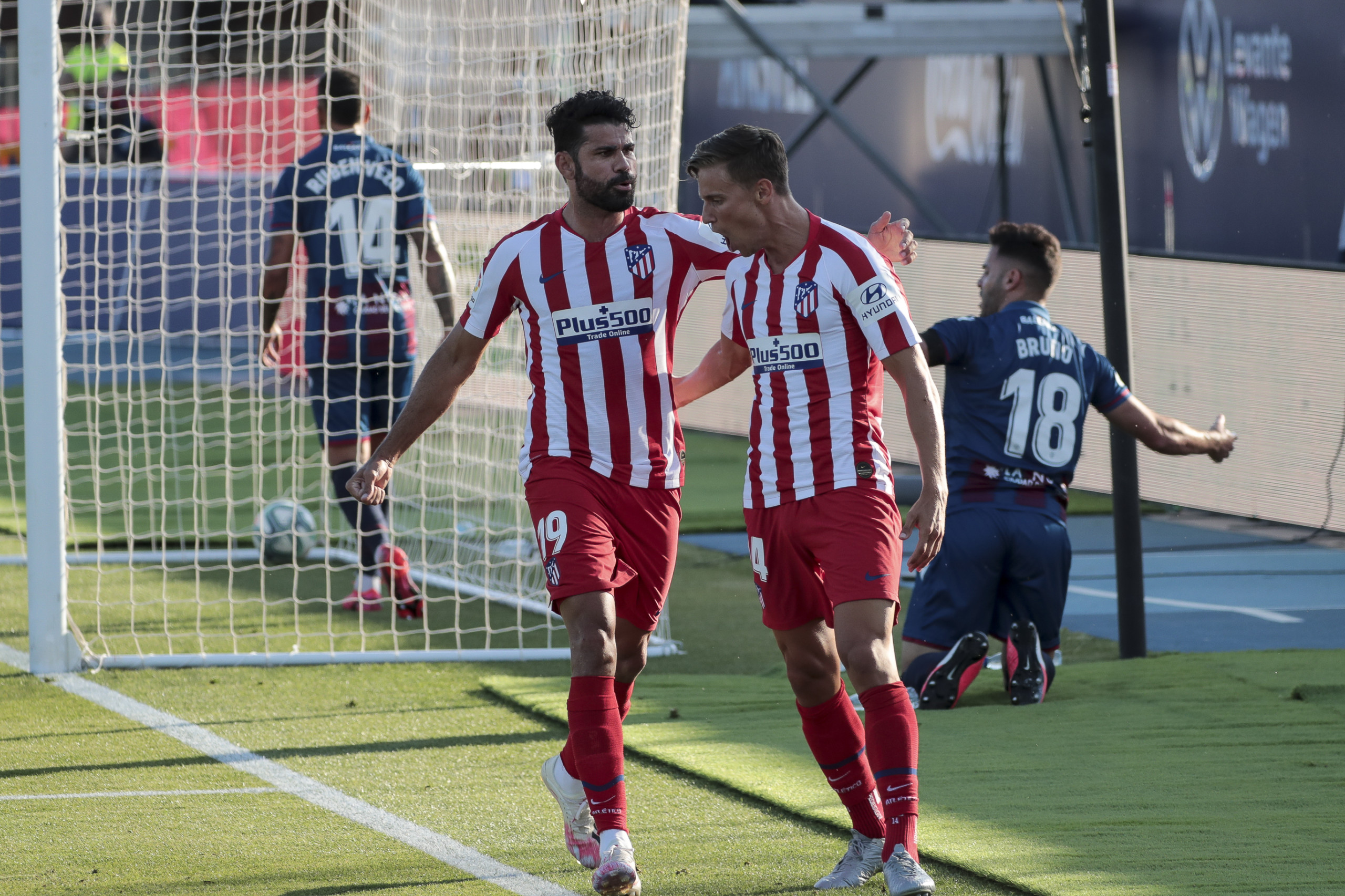With a daily dose of partidos, writing about La Liga feels very much like shooting at a moving target right now, but we’ll do our best.
The New Reality
La Liga is back, and much looks the same as before. Valencia are still conceding shots at an alarmingly high rate, Messi continues to bear outsize responsibility for the success of the Barcelona attack, and André Zambo Anguissa remains one of the league’s most active dribblers and ball carriers through midfield.

There has been very little variation in the number of dribbles attempted and completed, in how quickly teams move forward and in how high up the pitch they defend. The ball has been in play for more or less the same amount of time. A comparable number of free-kicks have been conceded, and the overall number of pressures and counterpressures has remained more or less constant.
But some things have changed. We’re still dealing with a very low sample size here, so caution should be exercised in drawing any concrete conclusions, but a few patterns stand out.
La Liga was already the major European league that saw the least shots and expected goals (xG) per match, and those figures have fallen even further since the restart. The number of shots has dropped from a pre-stoppage average of 22.36 per match down to 19.91, while the average xG has gone down from 2.12 to 1.92. It seems teams have struggled to successfully advance into dangerous areas as often as before. Completed passes within 20 metres of the opposition goal are down by over 15%.
The aggressiveness with which teams are contesting possession has also decreased. On average, teams are allowing over one extra pass for each intent to break up opposition passing chains. The number of pressures in the attacking half and the proportion of aggressive actions (tackles, pressure events and fouls recorded within two seconds of an opposition ball receipt) are also down.
Llorente's New Role at Atlético
Atlético Madrid have been in fine form since the restart, recording three wins and a draw to take advantage of slower starts from other Champions League contenders and move up into third, six points clear of Getafe in fifth.
Diego Simeone’s side have had good underlying numbers all season, but a finishing slump that lasted all the way into early February meant that results didn’t follow. At that stage, they were running well over seven goals behind expectation, and all four of their primary forwards were underperforming their individual xG sums.
Things do now seem to be evening themselves out. Atlético have performed four and a half goals ahead of expectation over their subsequent nine matches, yielding an unbeaten run of five wins and four draws.
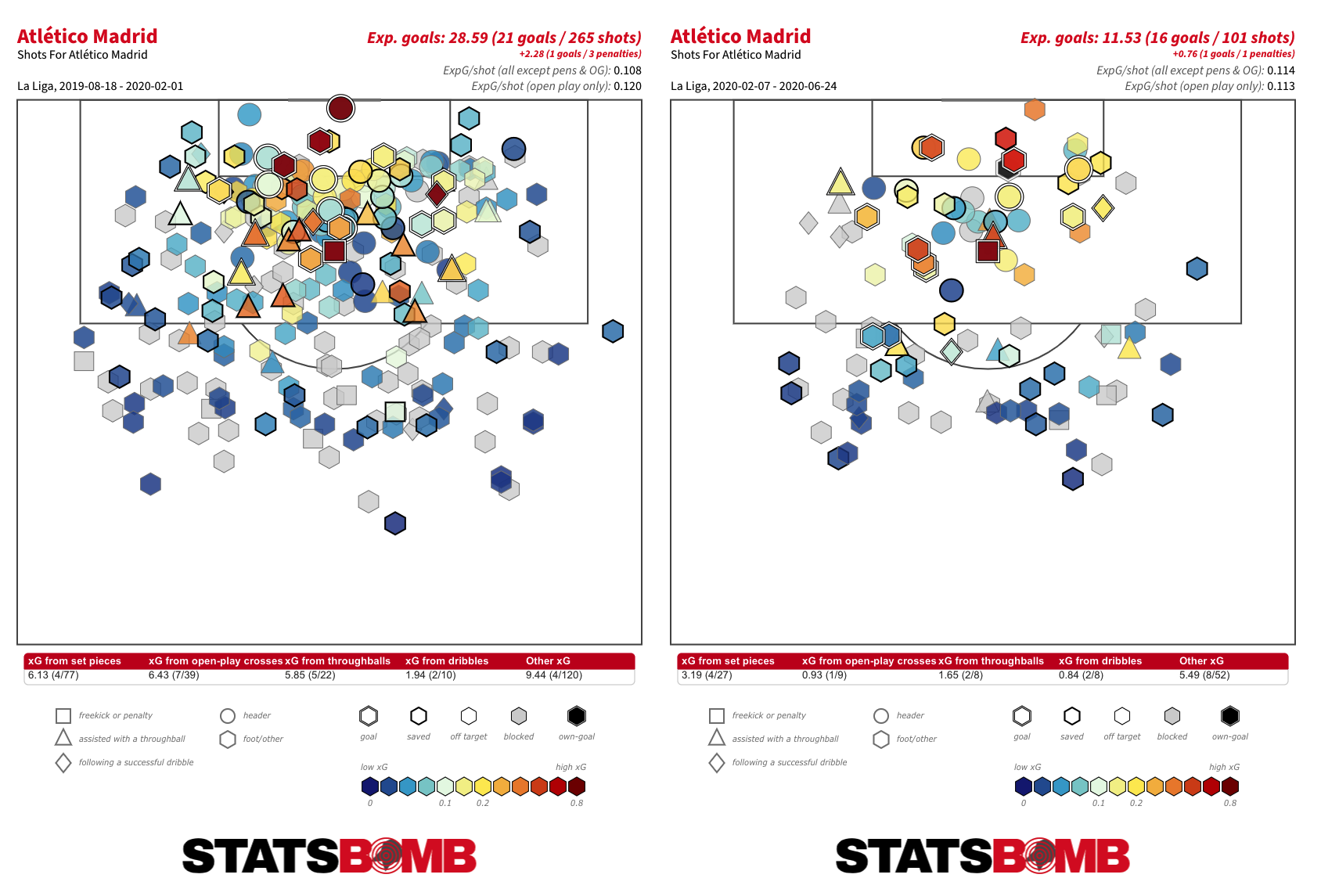
That surge primarily seems to be the result of a shift in fortune in front of goal, but Atlético’s results since the restart also have a fair bit to do with just how well Marcos Llorente has performed in an unfamiliar second striker role.
We got a glimpse of the possibilities in Atlético’s dramatic Champions League triumph over Liverpool just before the shutdown. There, Llorente was involved in all three of their extra-time goals, scoring twice and then slipping Álvaro Morata in behind for the third.
But few could have expected him to resume the campaign in an offensive role. A defensive midfielder by trade, there had been little in his performances at previous clubs or even at Atlético, where he hadn’t slotted in quite as well as expected, to suggest he had the skillset to thrive further up the pitch. His passing has always been more neat and tidy than incisive, and he’s never been even a medium-volume dribbler.
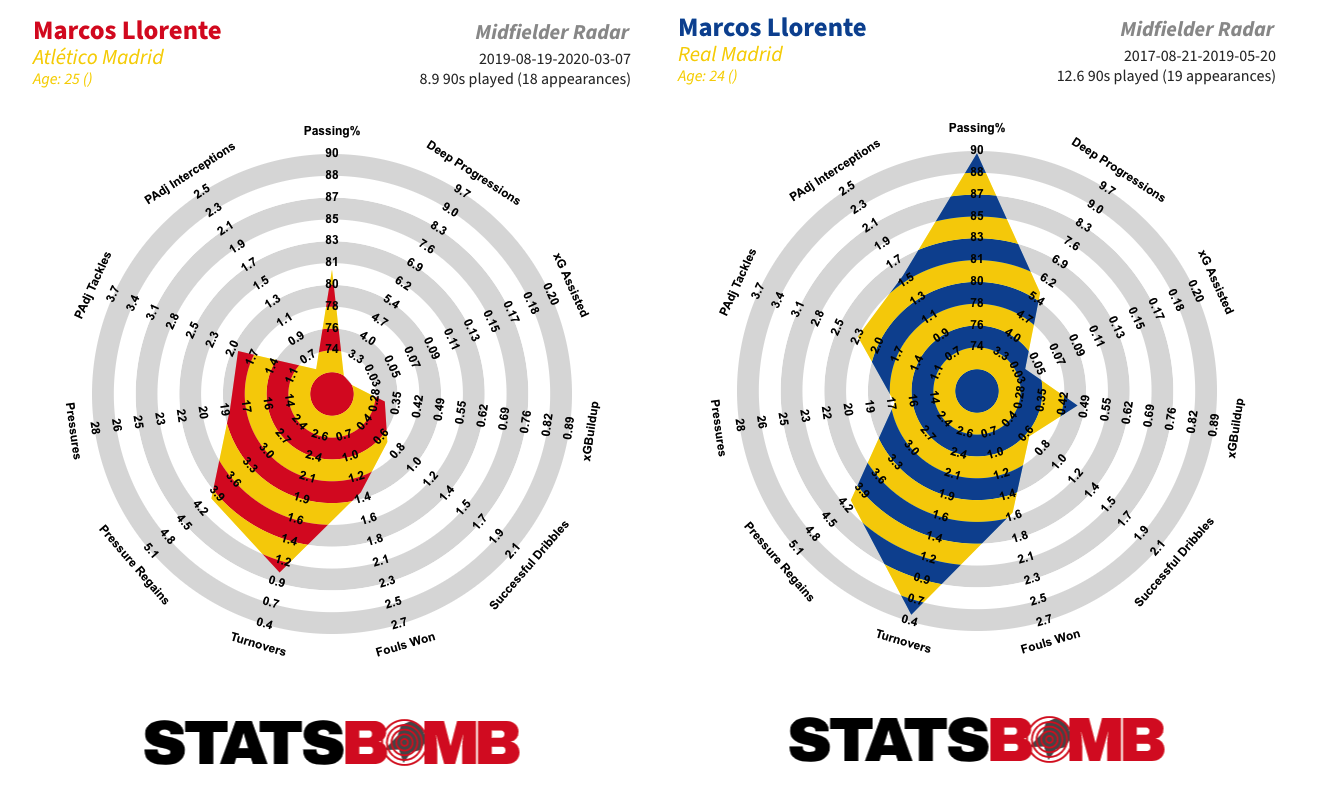
Simeone, though, had seen something. “After watching him in the training sessions, we decided to push him further forward against Liverpool and we discovered a player with different characteristics to the others in that position,” he explained after Llorente provided his third assist since the restart in Atlético’s 1-0 win away to Levante on Tuesday. A repeat of the surprisingly deft footwork that led to his goal against Osasuna this time produced space for a cutback deflected into his own net by Bruno González.
In just 231 minutes of football, Llorente has already completed double the number of dribbles he did in the previous 812...
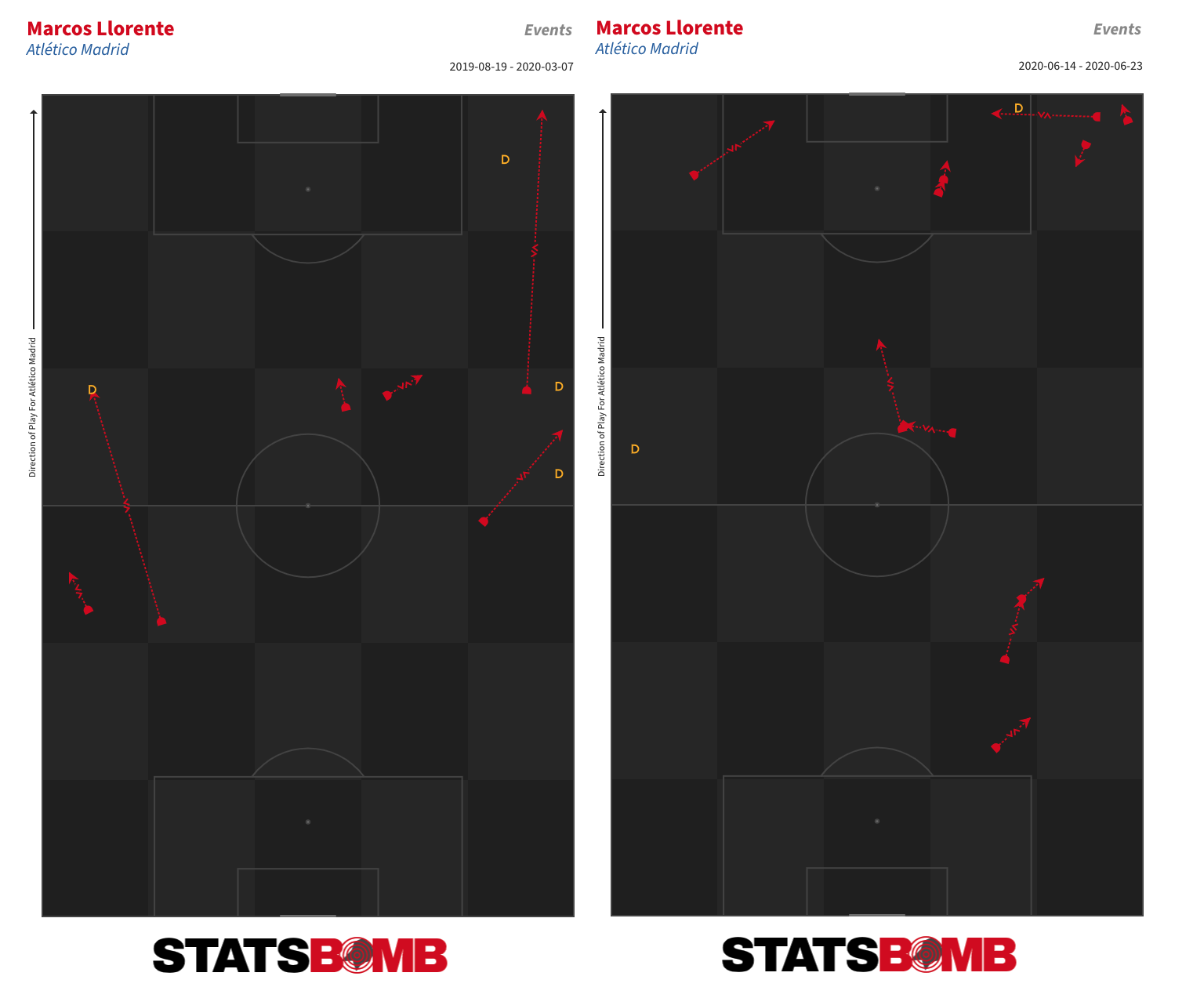
...and has set up more chances than the previous season and a half combined. After two seasons without completing a through ball, he has slipped through two in a week and a half. We are working with a super small sample size here, and it remains to see how much of this will hold over a larger one, but it appears that Simeone might just have engineered himself a new forward.
Betis Sack Rubi
It had been coming for a while, and finally the axe fell. Real Betis parted ways with head coach Rubi on Sunday following a 1-0 defeat away to Athletic Club that left them without a win since the restart and with just one in their last 10 matches.
Rubi produced an excellent seventh place finish at Espanyol last season but was unable to replicate the neat and progressive football of that side with what was, on paper at least, a more talented squad at Betis. The underlying numbers were okay -- upper, rather than lower, middle pack -- but not enough to offer stringent support for his continuation given the club’s budget and pre-season pretensions.
Rubi was never able to get on top of the defensive issues that led to his team conceding more goals than all but Espanyol and Mallorca, both of them relegation candidates. He also failed to derive any sort of output from summer arrival Borja Iglesias, signed for €28 million after an impressive season alongside Rubi at Espanyol. This is just pitiful:
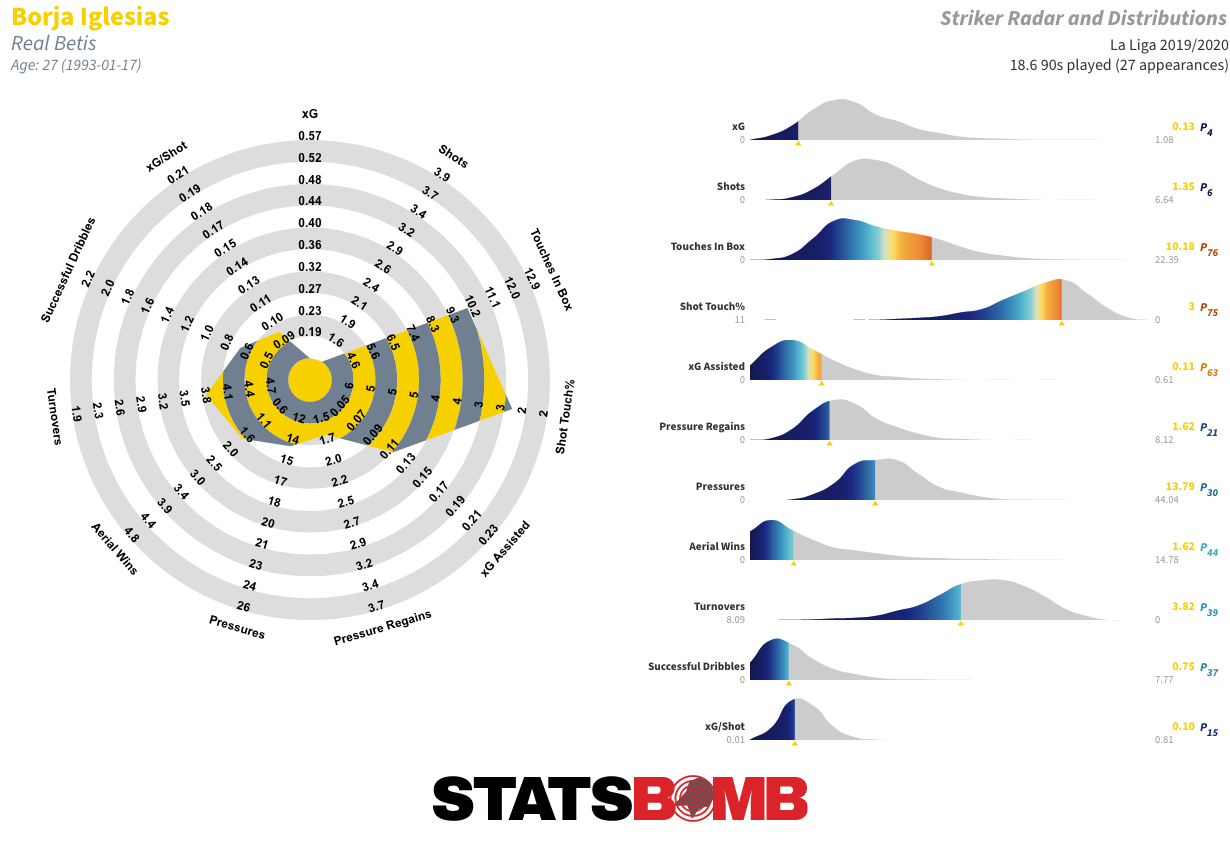
The reintroduction of elements of the approach of his predecessor Quique Setién did power a promising run of results through the back end of 2019 into the new year that was backed up by strong underlying numbers. But that swiftly petered out as attacking output cratered and their defensive numbers began to waver. Over the course of Rubi’s final 10 matches in charge, Betis were back to a pretty much even xG difference. More damagingly, they took just seven points -- alongside Eibar, the joint-lowest mark in the league.
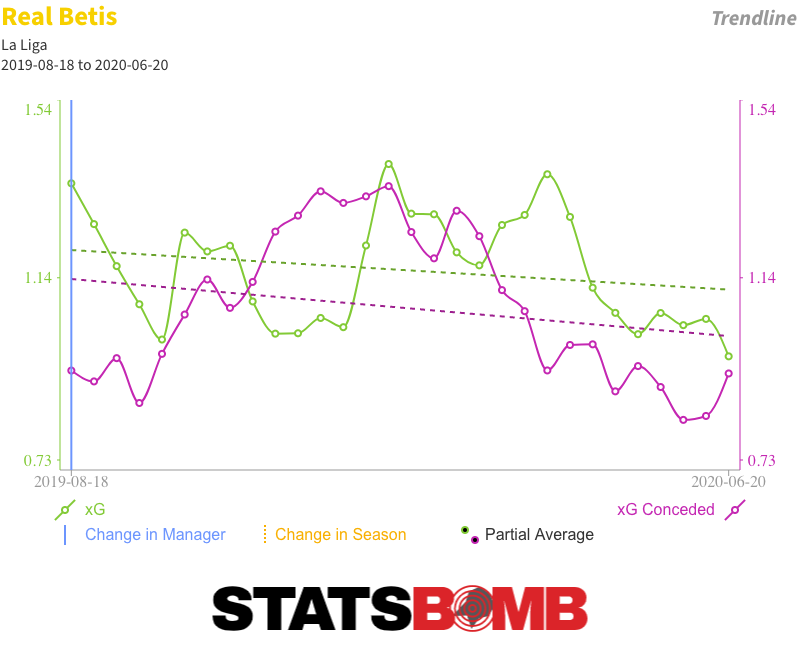
Rubi leaves Betis down in 14th, clear of the bottom three but with no realistic chance of European qualification. Another reset is in order. It seems that however much the directorship talk of modernising the club, this remains Betis: four head coaches and various backstage reshuffles in four seasons is about par de course at the Benito Villamarín. Alexis Trujillo takes charge until the end of the season, but who comes next? Javi Gracia, Manuel Pellegrini, maybe even Unai Emery?
